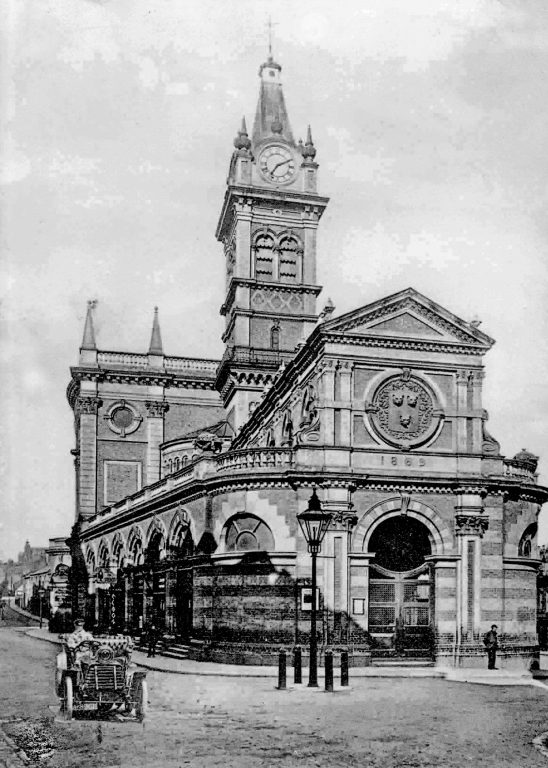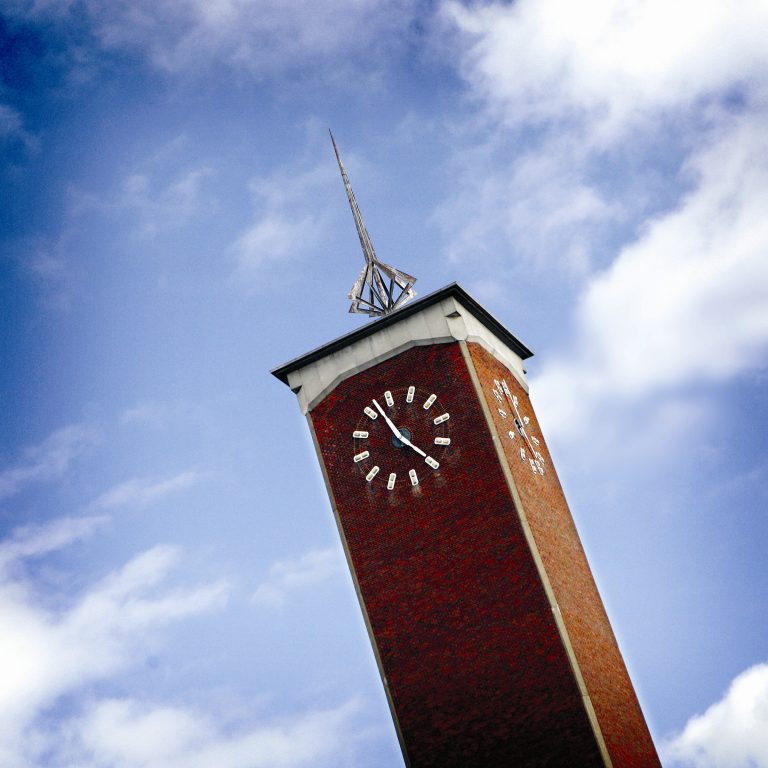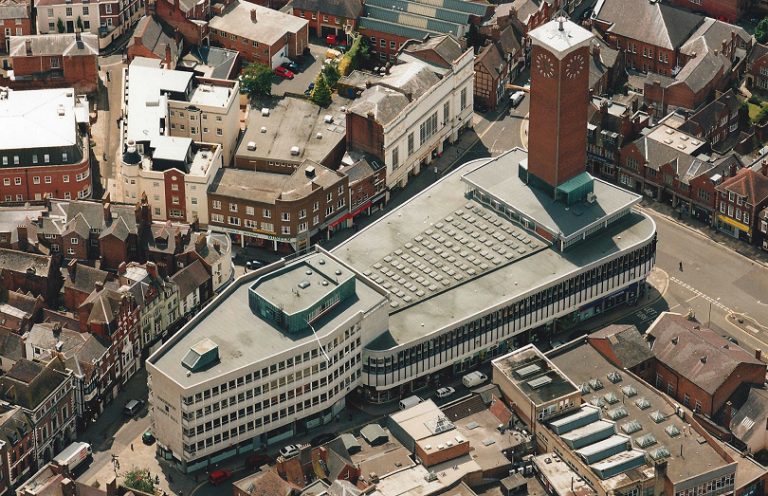
The Market Hall was considered to be a prime example of cutting edge modern architecture when it was officially opened amid a blaze of publicity and civic pageantry on September 16 1965.
It replaced a large Victorian market hall of similar proportions that was in a poor state of repair and was condemned as unhygienic, dingy and “no longer fit for purpose”.

Today, efforts would be made to preserve an old building of merit, but back in the ‘60s, in post-war Britain, the country was looking to a new age.
Developed by the Second Covent Garden Property Company, the new Market Hall cost £1 million to build and was designed by a respected architect of his day, David du Rieu Aberdeen. Aberdeen designed major buildings in London and made his name when he won a national competition to design Congress House for the TUC in Bloomsbury. Today Congress House is described as a “modernist masterpiece”.
Despite the credentials of its architect the Market Hall’s design was controversial from the start. Its contemporary critics were opposed to the demolition of the old Victorian market hall and predicted the new buiding would be a “white elephant”, but the old general market had drawbacks. It had little refrigeration and didn’t meet modern standards of hygiene. The supporters of Aberdeen’s design believed the new building, measuring 74,000 sq ft, stood for progress and was a marked improvement on the “Victorian monstrosity” that had stood on the site for 96 years.

The Pevsner Architectural Guide pronounced the new Market Hall “a good example of modern architecture”, with “its clean lines and simple forms. But the town’s timber-framed tradition is also evoked. The upper storey is jettied out on a reinforced concrete structure and faced with vertical fins in an echo of close studding,” it stated. “The tall slender red brick clock tower mingles effectively in distant views with the town’s medieval steeples.”
Aberdeen’s market hall took over two years to build, with construction taking place in two parts to allow the market to continue trading. The Mardol end, known as Mardol House, was built first so that traders and shopkeepers could move in there until the remainder of the Market Hall was finished.
The original plans had also included a roof restaurant and garden, but these never came off.
The new building housed not only the new market, but the town’s highest clock tower, 23 shops at street level, a furniture store and office suites. The original plans had also included a roof restaurant and garden, but these never came off.
A 100-ton crane with a jib reaching 240ft was needed to complete the 200ft clock tower. With adjoining streets closed to traffic, the crane lifted into position the coping stones and 37ft high aluminium finial. The topping off ceremony was held on April 7 1965.

The building was officially opened by the lord lieutenant of Shropshire Viscount Bridgeman, with a multitude of borough and council officials and townspeople in attendance. 120 special guests in all were invited.
The new market was a two-tier design comprising 68 permanent stalls around the perimeter and over a 100 movable benches in a traditional pannier market in the centre.
During the design negotiations members of the corporation had visited other market towns and decided the old method of trading on benches, as had been the tradition in the Victorian market, was best. This method of trading continued for well over two decades. Many of the bench traders were farmers wives, countrywomen and small producers renting stalls by the foot to sell their eggs, butter, cheese, vegetables and other goods. Around 25 years ago the current canopied stalls replaced the benches and more permanent market businesses took their place.
Since February 2015, Shropshire Council has jointly managed the market with Shrewsbury Town Council, and it has overseen a major urban regeneration project to transform the upper floors of Mardol House into a student hall of residence for the new University Centre Shrewsbury.
Today the indoor market is thriving once more. It’s home to more than 70 independent businesses and fast gaining a reputation as one of the best markets around and a place to find great food and a real shopping experience. In 2018 Shrewsbury Market hall was crowned ‘Britain’s Favourite Market’ in the Great British Market Awards.
Traditional market stalls selling fresh farm produce stand alongside cosmopolitan cafes, award-winning artisan producers, vintage and antique sellers and a host of quality craft and gift stalls. There’s even a resident artisan gin bar and regular Saturday late night events six times a year.


